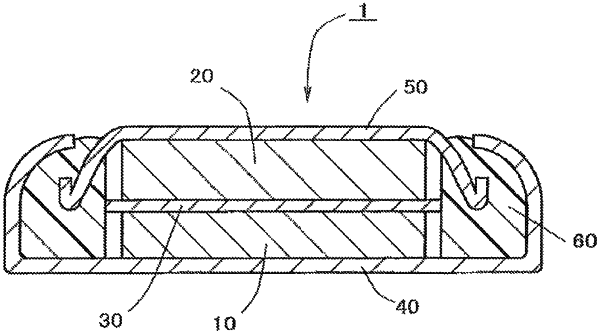| CPC H01M 4/366 (2013.01) [H01M 4/628 (2013.01); H01M 10/0525 (2013.01); H01M 10/0562 (2013.01); H01M 2004/021 (2013.01); H01M 2004/028 (2013.01); H01M 4/525 (2013.01); H01M 2300/008 (2013.01)] | 16 Claims |

|
1. An electrode for an all-solid-state battery to be used in an all-solid-state battery, the electrode comprising
a molded body made of a mixture that contains an active material-containing electrode material and a solid electrolyte,
wherein the electrode material is in the form of a composite particle that includes a layer containing a sulfide-based solid electrolyte A1 on at least a portion of its surface,
the mixture molded body includes a sulfide-based solid electrolyte B1 between the composite particles,
the solid electrolyte A1 and the solid electrolyte B1 contain elemental phosphorus, elemental sulfur, and a halogen Y including at least one of Cl and Br, and optionally at least one element X selected from the group consisting of Si, Ge, and Sn, and when the sum of molar ratios of the elemental phosphorus and the element X is taken as 1, a molar ratio c of the element X satisfies 0≤c<0.5, and
molar ratios of Cl and Br in the Y element contained in the solid electrolyte A1 satisfy a relationship Cl>Br, and molar ratios of Cl and Br in the Y element contained in the solid electrolyte B1 satisfy a relationship Cl≤Br.
|